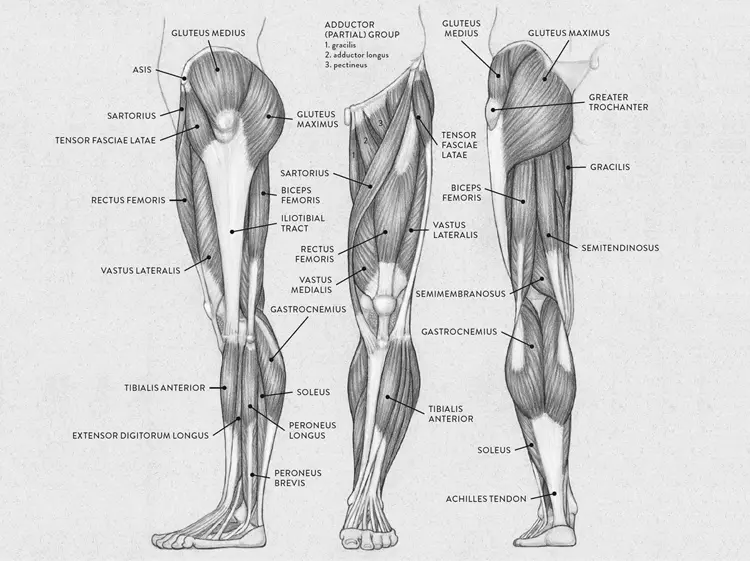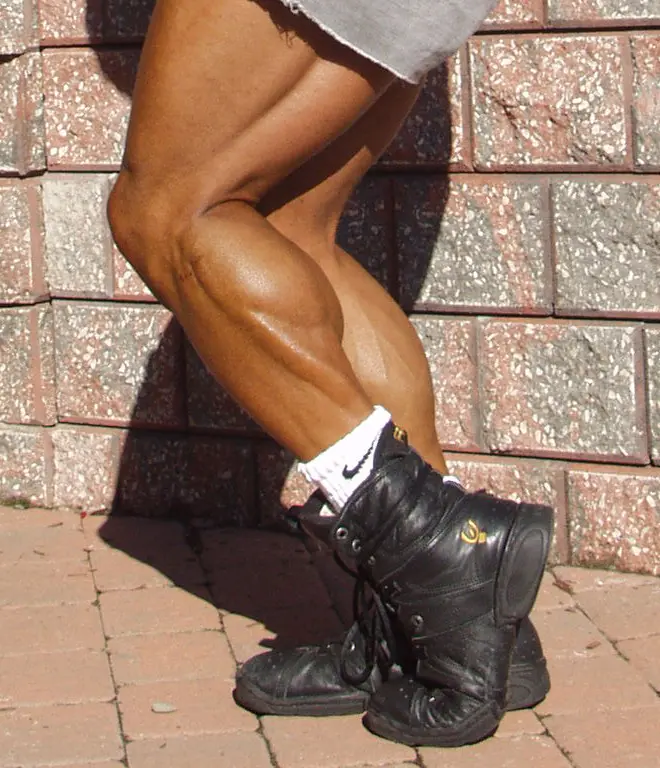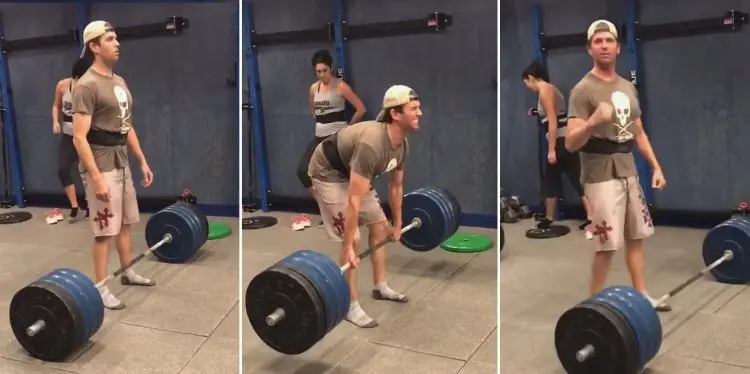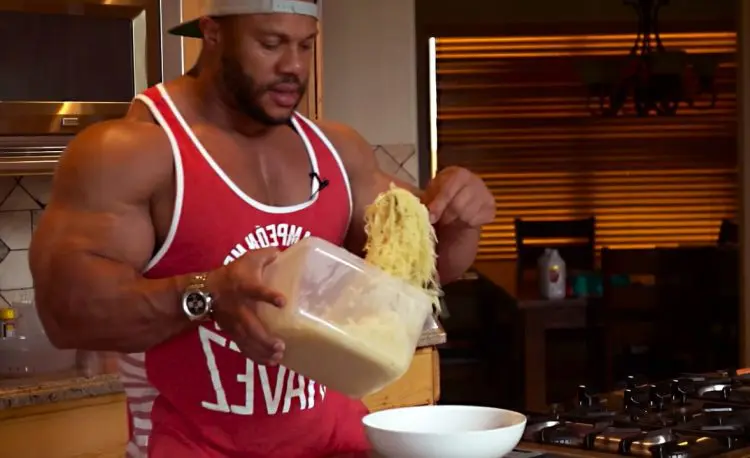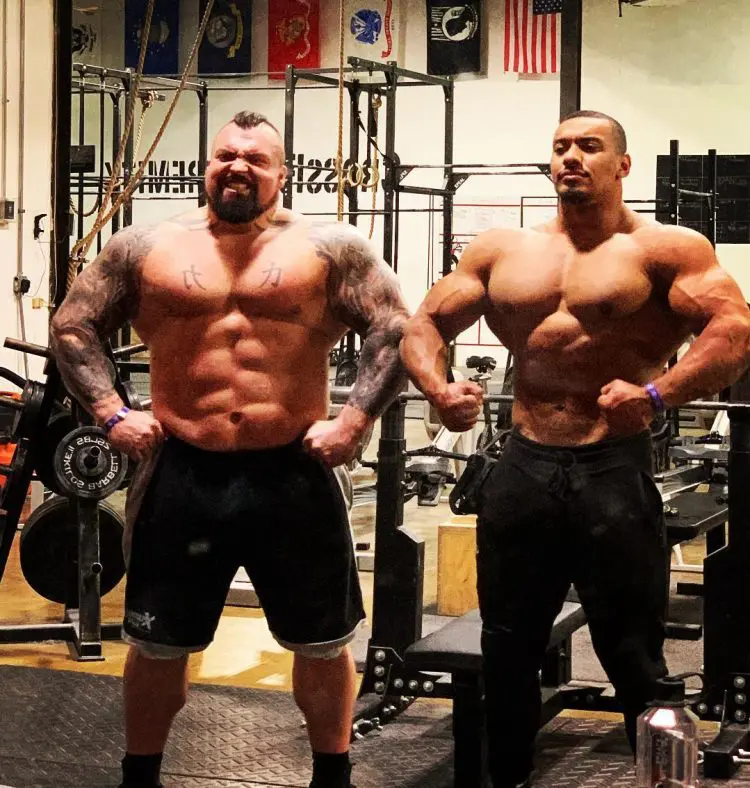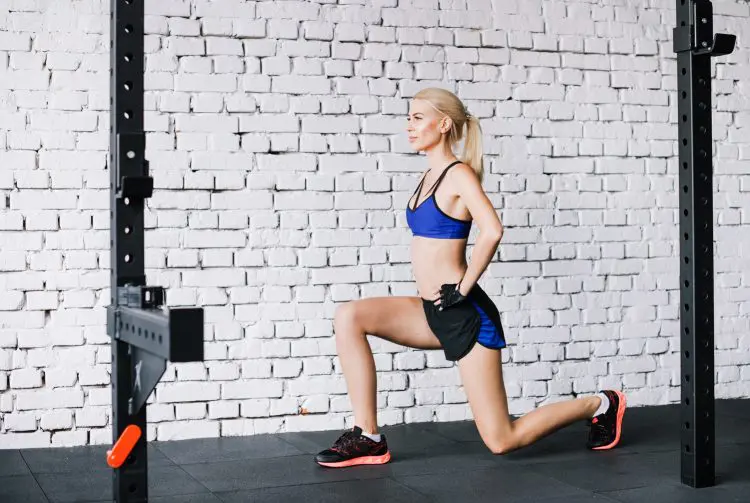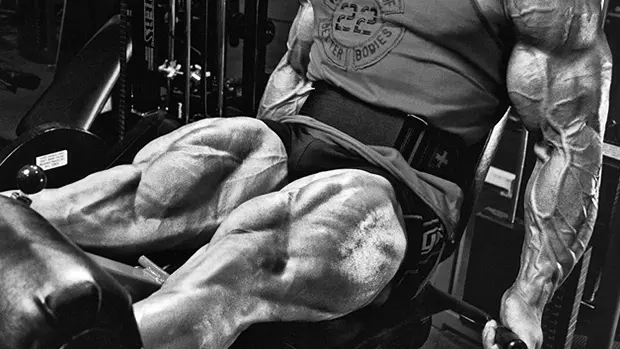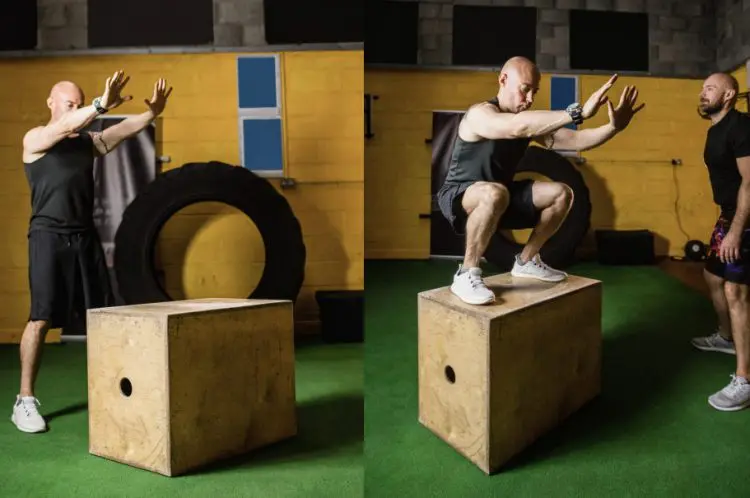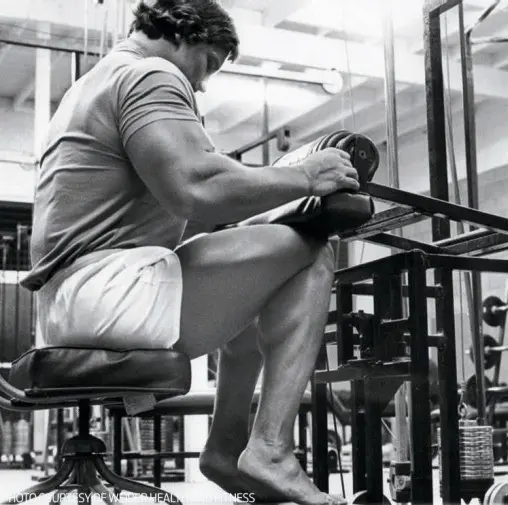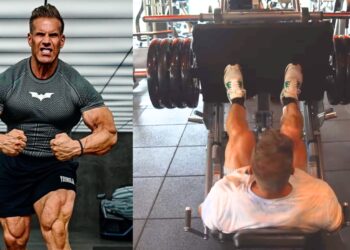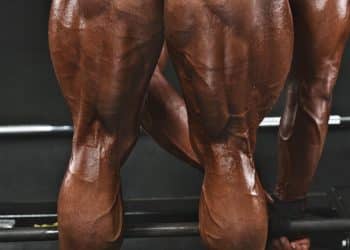Old-school bodybuilders had a saying – you can’t fire a cannon out of a canoe. In other words, it doesn’t matter how big, or strong your upper body is; you need an equally well-developed lower body too. An underdeveloped lower body unbalances your physique and will also affect your athletic performance.
Unfortunately, leg training is HARD, and you’ll need more than just a few sets of leg presses and leg extensions to build an impressive lower body. Instead, you need to dedicate at least one training session per week to working your legs, and you’ll need to hit them with plenty of volume and intensity too.
While there is nothing to stop you from building your own workout plan and slotting it into your usual weekly training split, you’ll probably get better results if you follow a workout designed for you. After all, when you plan your own workouts, it’s all too easy to gravitate toward exercises you know and like, and away from the hard work you really need to do.
In this article, we’ve got 7 new powerful lower body strength training routines for you to try. Use each one for 6-8 weeks to keep your training productive and interesting.
Lower Body Anatomy
While you don’t need to know the names and functions of all your leg muscles to have a good workout, a basic understanding of anatomy and physiology is often useful. That way, you’ll be able to see what makes our workouts so effective. You’ll also be able to dazzle your training buddies with your newfound anatomical knowledge.
Level Up Your Fitness: Join our 💪 strong community in Fitness Volt Newsletter. Get daily inspiration, expert-backed workouts, nutrition tips, the latest in strength sports, and the support you need to reach your goals. Subscribe for free!
To that end, a good lower body workout should include the following muscles:
Quadriceps:
Located on the front of your thighs, the quadriceps or quads for short are made up of four muscles. These muscles have different origin points and then come together at a common tendon and insertion point just below your knee. The quadriceps muscles extend your knee and flex your hip, and are the rectus femoris, vastus lateralis, vastus medialis, and vastus intermedius.
Hamstrings:
The hamstrings are located on the back of your thigh. They flex your knees and extend your hip. They’re made up of three muscles, the biceps femoris, semimembranosus, and semitendinosus.
Gluteus maximus:
Known as the glutes for short, this is the largest and potentially most powerful muscle in the human body. Located on the back of your hips, its primary role is hip extension, and it also plays a part in the external rotation of the femur. Along with the hamstrings, the glutes are part of your posterior chain, which is a group of muscles that are crucial for athletic performance and posture.
Adductors:
The collective name for the muscles on the inside of your thigh. The adductors draw your leg in toward the midline of your body. The three muscles are the adductor longus, brevis, and magnus, and gracilis.
Abductors:
Located on the outside of your hips and thighs, the abductors lift your leg up and out to the side. The main muscles in this group are the gluteus minimus and medius and tensor fascia latae (TFL).
Triceps surae:
Triceps surae is the collective term for the two calf muscles – the gastrocnemius and the soleus. Both of these muscles extend (plantarflex) your ankles, while the gastrocnemius is also involved in knee flexion. The gastrocnemius is most active when your knee is straight. Bending your knee increases soleus activation.
While there are lots of additional lower body muscles, these are the ones that contribute the most to the size and strength of your lower body. A workout that involves all of these muscles should produce good results.
General Workout Guidelines
Get the most from the following workouts by using these guidelines.
1. Adapt your workout to your training goal
You can modify most of the following workouts to suit a range of training goals. The accepted rep ranges, weights, and rest periods for the different training goals are:
| Strength/Power | Hypertrophy | Endurance | |
| Weight (% 1RM) |
85+ | 67-85 | 60-67 |
| Reps | 1-5 | 6-12 | 13-20+ |
| Rest between sets | 3-5 minutes | 1-2 minutes | 30-60 seconds |
2. Never neglect your warm-up
A good warm-up should help protect you from injury AND improve your workout performance. Get your muscles and joints ready to train by doing 5-10 minutes of easy cardio and some dynamic stretching and mobility exercises.
Finish off with 2-3 sets of the main exercises in the workout you are about to do, using progressively heavier weights.
3. Good form, always
There are two ways to do most exercises; the RIGHT way and the WRONG way. The right way keeps the mechanical tension on the muscles you want to develop, while the wrong way increases your risk of injury.
Learn how to do the exercises in your workouts correctly, both for better gains and fewer aches and pains.
4. Practice proper progression
You are only as strong as your last workout, and if you do the same exercises with the same weights for the same number of reps more than a couple of times, your progress will soon stall.
Avoid workout ruts by:
- Doing more reps with the same weight
- Doing the same number of reps with more weight
- Taking shorter rests between sets
- Decreasing your tempo for more time under tension
- Doing more sets
- Changing to a new workout
You can read more about modifying exercises and workouts to make them more challenging in this in-depth guide.
5. Don’t forget rest and recovery
Strength training is catabolic. That means it causes muscle breakdown. Given adequate time between workouts, your muscles will grow back bigger and stronger. You can speed up your progress by paying more attention to rest and recovery.
This may also include periodic breaks from training, a process called deloading. If you are training hard but still aren’t making progress, you may need to spend more time on recovery.
6. Eat for your goals
Level Up Your Fitness: Join our 💪 strong community in Fitness Volt Newsletter. Get daily inspiration, expert-backed workouts, nutrition tips, the latest in strength sports, and the support you need to reach your goals. Subscribe for free!
What training takes out of your body, rest, recovery, and nutrition put back in. Your diet should match your training goals. For example, if you want to get lean, you may need to consume fewer calories.
But, if you are bulking, you need to eat more food. Adjust your diet based according to what you want to achieve from your workouts.
Routine 1 – Machines Only Bodybuilding Program
A lot of fitness trainers are very down on strength training machines. They say that machines aren’t functional and that they don’t transfer well to life outside the gym. While those criticisms may be valid, machines aren’t inherently bad and can actually be very useful for building muscle.
When you train using machines, all you need to do is focus on lifting and lowering the weight. Very little balance is required, and that means you can concentrate on the muscles you are training. As an added benefit, you can usually train to failure in relative safety.
This workout uses nothing but resistance training machines, making it ideal for building lower body muscle size.
| Program 1 – Machines Only Bodybuilding Program | ||||
| Exercise | Sets | Reps | Recovery | |
| 1 | Smith machine squats | 5 | 8 | 90 seconds |
| 2 | Cable pull-throughs | 4 | 12 | 60 seconds |
| 3 | Leg presses | 4 | 10 | 90 seconds |
| 4 | Leg curls | 3 | 12 | 60 seconds |
| 5 | Seated calf raises | 3 | 10 | 60 seconds |
| 6 | Standing calf raises | 3 | 10 | 60 seconds |
Routine 2 – Power Building Program
This big-but-basic workout is designed to build muscle strength and size. It combines elements of powerlifting and bodybuilding – a training style called powerbuilding. If you want to be big AND strong, this could be the workout for you.
| Program 2 – Powerbuilding Program | ||||
| Exercise | Sets | Reps | Recovery | |
| 1 | Barbell back squats | 5 | 5 | 2-3 minutes |
| 2 | Leg press | 3 | 8 | 90 seconds |
| 3 | Leg extensions | 3 | 12 | 60 seconds |
| 4 | Rack pulls | 5 | 5 | 2-3 minutes |
| 5 | Leg curls | 3 | 12 | 60 seconds |
| 6 | Standing calf raises | 4 | 12 | 60 seconds |
Routine 3 – Bodyweight-only Leg Program
Are you stuck at home with no training equipment? Don’t worry; you can still train your legs. You might not build bar-bending strength or massive muscles with this workout, but you should be able to preserve your gains until you can get back in the gym. This is a good workout for muscular endurance and fat burning.
Make it harder by using blood flow restriction (BFR) training cuffs.
| Program 3 – Bodyweight-only Leg Program | ||||
| Exercise | Sets | Reps | Recovery | |
| 1 | Prisoner squats | 3 | 20 | 60 seconds |
| 2 | Hip thrusts | 3 | 15 | 60 seconds |
| 3 | Lunges | 3 | 12 per leg | 60 seconds |
| 4 | Single-leg Romanian deadlifts | 3 | 10 per leg | 60 seconds |
| 5 | Bulgarian split squats | 3 | 10 per leg | 60 seconds |
| 6 | Standing calf raises | 3 | 15 | 60 seconds |
Routine 4 – Lower Body Superset Program
Supersets are a type of training system. With supersets, you do two exercises back to back, indicated as a) and b) exercises in the plan below. This cuts down on recovery time and increases time under tension and workout density, making for a shorter but more intense training session. There are several different types of supersets, including pre and post-exhaust and agonist/antagonist supersets.
To perform a superset, do the first exercise (a) and then immediately do the second exercise (b). Rest for the designated time and then repeat the pairing.
| Program 4 – Lower Body Superset Program | ||||
| Exercise | Sets | Reps | Recovery | |
| 1a | Leg extensions | 4 | 12 | 90 seconds |
| 1b | Goblet squats | |||
| 2a | Leg curls | 4 | 12 | 90 seconds |
| 2b | Romanian deadlifts | |||
| 3a | Step-ups with dumbbells | 3 | 10 per leg | 60 seconds |
| 3b | Reverse dumbbell lunges | |||
| 4a | Seated calf raises | 3 | 15 | 60 seconds |
| 4b | Standing calf raises | |||
Read more about supersets in this detailed guide.
Program 5 – Free weight only Leg Program
If you train in a garage gym, you may not have access to things like leg extension or leg press machines. The good news is that you can still build impressively strong, powerful legs. After all, old-school bodybuilders only had access to free weights and rudimentary machines, and they managed to create incredible physiques, so you can do it too.
All you need for this workout is a barbell, some dumbbells, and a willingness to work your butt off!
| Program 5 – Free weight-only Leg Program | ||||
| Exercise | Sets | Reps | Recovery | |
| 1 | Front squats | 4 | 8 | 90 seconds |
| 2 | Romanian deadlifts | 4 | 8 | 90 seconds |
| 3 | Dumbbell lunges | 3 | 12 per leg | 60 seconds |
| 4 | Dumbbell leg curls | 3 | 12 | 60 seconds |
| 5 | Sissy squats | 2 | 15 | 60 seconds |
| 6 | Single-leg calf raises | 3 | 12 per leg | 60 seconds |
Routine 6 – Freaky Functional Leg Program
This next workout uses some unusual exercises to work your muscles from a host of different angles. If you work hard, you’ll still get bigger and stronger, but you’ll also improve things like mobility, balance, and coordination.
These exercises are technically demanding, so start light and increase your weights only if you can perform them correctly.
| Program 6 – Freaky Functional Leg Program | ||||
| Exercise | Sets | Reps | Recovery | |
| 1 | Overhead squats | 4 | 10 | 90 seconds |
| 2 | Walking dumbbell lunges | 4 | 12 per leg | 60 seconds |
| 3 | Zercher good mornings | 3 | 10 | 60 seconds |
| 4 | Lateral dumbbell lunges | 3 | 12 per leg | 60 seconds |
| 5 | Box jumps | 3 | 15 | 60 seconds |
| 6 | Single-leg calf raises | 3 | 12 per leg | 60 seconds |
Routine 7 – The Kitchen Sink Program
Variety, they say, is the spice of life. Instead of doing several sets of a select number of exercises, this workout involves doing just one set of a longer list of movements.
The volume is more-or-less the same as the previous workouts, but you’ll be hitting your muscles from lots of different angles. If you get bored doing the same exercises over and over again, this is the workout for you!
| Program 6 – The Kitchen Sink Program | ||||
| Exercise | Sets | Reps | Recovery | |
| 1 | Back squats | 1 | 5 | 2 minutes |
| 2 | Leg press | 1 | 8 | 90 seconds |
| 3 | Leg curls | 1 | 12 | 60 seconds |
| 4 | Step-ups with dumbbells | 1 | 15 per leg | 60 seconds |
| 5 | Deadlifts | 1 | 5 | 2 minutes |
| 6 | Smith machine squats | 1 | 8 | 90 seconds |
| 7 | Leg extensions | 1 | 12 | 60 seconds |
| 8 | Seated calf raises | 1 | 15 | 60 seconds |
| 9 | Front squats | 1 | 5 | 2 minutes |
| 10 | Romanian deadlifts | 1 | 8 | 90 seconds |
| 11 | Split squats | 1 | 12 per leg | 60 seconds |
| 12 | Squat jumps | 1 | 15 | 60 seconds |
| 13 | Hang cleans | 1 | 5 | 2 minutes |
| 14 | Bulgarian split squats | 1 | 8 per leg | 90 seconds |
| 15 | Dumbbell lunges | 1 | 12 per leg | 60 seconds |
| 16 | Standing calf raises | 1 | 15 | 60 seconds |
| 17 | Sumo deadlift | 1 | 5 | 2 minutes |
| 18 | Zercher squats | 1 | 8 | 90 seconds |
| 19 | Hip thrusts | 1 | 12 | 60 seconds |
| 20 | Box jumps | 1 | 15 | 60 seconds |
Wrapping Up
Lower body training is almost always hard, but that doesn’t mean it needs to be boring or repetitive. You could use the Weider Instinctive Method to keep your workouts varied and interesting, but you’ll probably get better results from a more structured lower body training program.
Try one of our seven tried and tested lower body strength training routines. You’ll soon be on your way to building legs you can be proud of!

